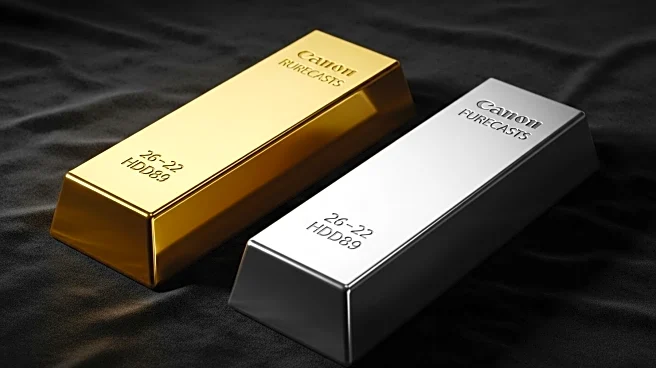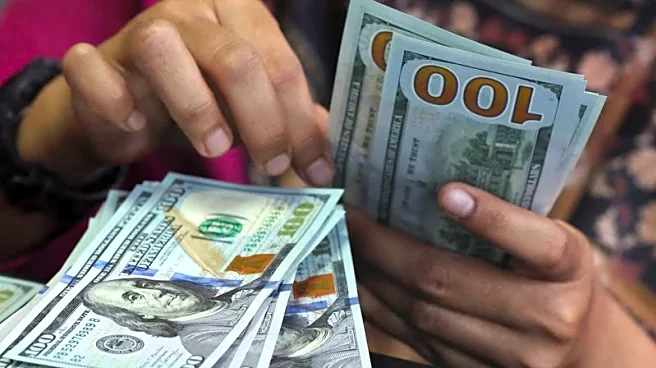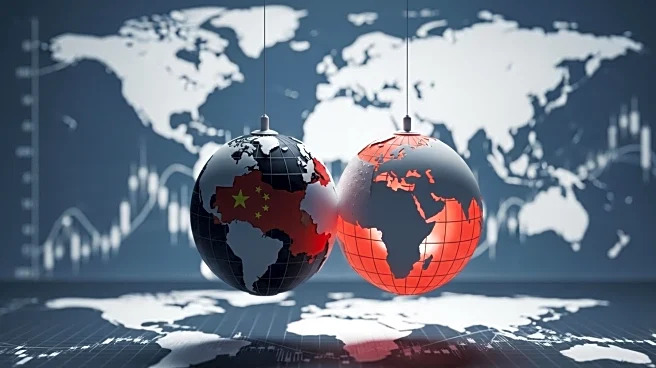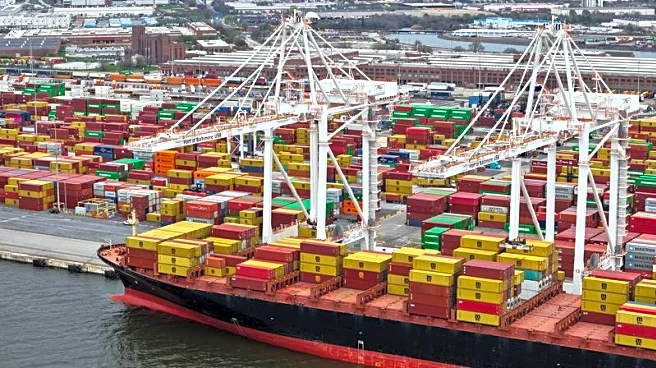What's Happening?
HSBC has revised its average gold price forecasts for 2025 and 2026, citing increased safe-haven demand due to geopolitical tensions, economic uncertainty, and a weakening U.S. dollar. The bank raised
its 2025 forecast to $3,355 per ounce from $3,215 and its 2026 forecast to $3,950 from $3,125. Gold has seen a significant rise, hitting a record high of $4,250.89, driven by mounting fiscal deficits in the U.S. and other major economies. HSBC notes that central bank demand remains high, fueled by geopolitical risks and dollar diversification. However, potential fewer rate cuts by the U.S. Federal Reserve could temper the rally. The bank also maintained its 2025 price forecasts for platinum and palladium.
Why It's Important?
The upward revision of gold price forecasts by HSBC reflects broader economic and geopolitical trends impacting global markets. As a traditional store of value, gold's rising demand indicates investor concerns over economic stability and geopolitical conflicts. This trend could influence investment strategies, with increased allocations to gold as a hedge against uncertainty. The forecast adjustments may affect mining companies and investors, driving exploration and production activities. Additionally, the demand for gold could impact currency markets, particularly the U.S. dollar, as investors seek diversification. The stability of gold prices is crucial for industries reliant on precious metals, including technology and jewelry manufacturing.
What's Next?
Investors and market analysts will closely monitor the U.S. Federal Reserve's actions regarding interest rate cuts, as these decisions could influence gold's price trajectory. The geopolitical landscape, particularly U.S.-China relations, will also play a significant role in shaping market sentiment. Central banks may continue to adjust their gold reserves in response to economic indicators and geopolitical developments. The mining industry might experience increased activity as companies seek to capitalize on higher gold prices. Additionally, fluctuations in global inflation rates could impact consumer behavior, particularly in jewelry purchases.
Beyond the Headlines
The rising demand for gold highlights the ongoing challenges in achieving economic stability amid geopolitical tensions. Ethical considerations regarding resource extraction and environmental impact may gain attention as mining activities increase. The cultural significance of gold as a symbol of wealth and security could be reinforced, influencing consumer preferences and investment strategies. Long-term, the focus on gold as a safe-haven asset may drive innovation in financial products and services designed to leverage its stability.












